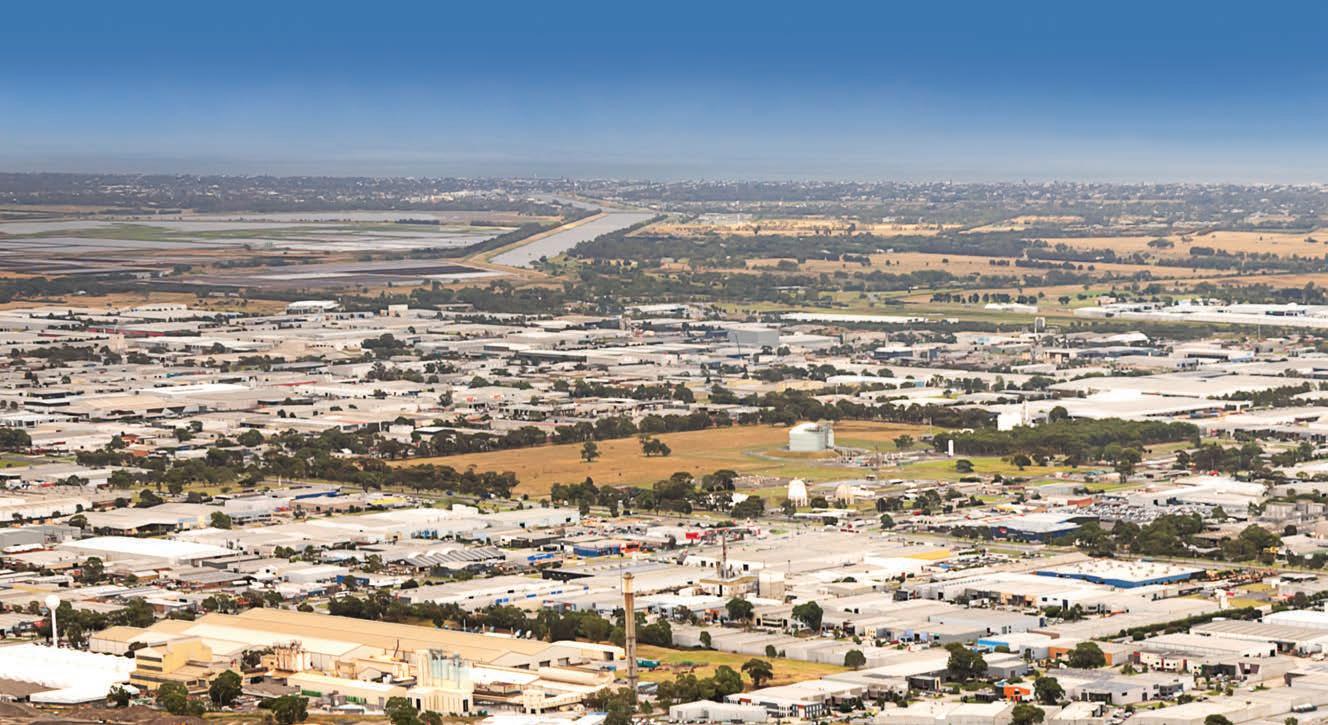
4 minute read
Colliers Property Focus
from MHD Apr 2022
by Prime Group
THE STATE OF SOUTHEAST MELBOURNE
Gordon Code and James Stott, Directors at Colliers heading up Melbourne’s southeast industrial team, share their recent experiences in and analyses of the southeast sector – and what the near future looks like.
CColliers Directors Gordon Code and James Stott head up a team of six people dedicated to Melbourne’s southeast industrial property market.
“James and I focus on major site sales, institutional leasing, and investment sales,” Gordon says. “And we also have a team working with middle markets, encompassing smaller properties and the strata space.”
It’s a young and dynamic team, with Gordon telling MHD that the average age of the team is mid-twenties. But while relatively young themselves, Gordon and James are highly knowledgeable and effective experts in the industrial property sector.
Indeed, one particularly impressive transaction the pair recently handled was a 10 year lease to the iconic Toys”R”US of a purpose-built 19,650sqm facility in Clayton South, part of ESR’s Clayton Business Hub.
The Toys”R”US facility will consolidate the retailer’s operations under one roof, and serve a hybrid function catering to modern e-commerce distribution needs as well as housing a showroom where customers can engage with Toys”R”US brands.
Although this property falls within the eastern rather than southeast industrial property boundary – Gordon says there is close collaboration between the eastern and southeast teams – James notes it was an interesting transaction not simply because of its scale, but because it reflects the unique changes brought on by rising e-commerce, and how one major retailer is responding.
“This is a new foray for them back into a customer facing experience that is simultaneously heavily focused on e-commerce,” Gordon says. “The fulfilment centre that they’ve committed to also includes a showroom, a customer experience centre.
“Instead of opting for Dandenong in the southeast, they instead have chosen to go for Clayton in the east. While shoppers clearly enjoy the ease of e-commerce and online fulfilment of their orders, there is still something attractive about the physical experience of shopping – taking the kids on a trip to Toys”R”US on the weekend, for instance. With this facility they retain the e-commerce focus and capability but add on to that a more focused and engaging
The southeast has the greatest amount of zoned land east of Melbourne city.
customer facing experience with a special showroom. It’s one interesting case study in how a major retailer is adjusting to a new era of retail and distribution.”
The choice of Clayton was also instructive, as it is more densely populated and closer to higher socioeconomic areas. It’s not a full return to the in-person retail model, but it’s a concession to the importance of a proximal physical presence for customers. Gordon notes that Toys”R”US intends to pursue a similar strategy in terms of use and location for a larger national rollout – and is currently examining equivalent opportunities in Sydney.
SOUTHEAST TRENDS
While both the east and southeast industrial and logistics property markets distinguish themselves – relative to the north and west – by virtue of their easier access to the demographic centre of Melbourne, the southeast differs from the east in key respects.
“From a market perspective, a lot of the established industrial precincts in the eastern market are legacy areas that have undergone quite substantial gentrification,” James notes. “Whereas the southeast has the greatest amount of zoned land east of the city. Big users are therefore gravitating more towards the southeast over the east – and bigger groups are moving out of the east because they are increasingly facing greater traffic and congestion. Unless you’re a Toys”R”US that is integrating a more up-market customer facing component, the east is less and less viable for a lot of DCs.”
Considering the southeast market in a broader context, James says that it largely mirrors broader trends across the eastern seaboard.
“They are perhaps more pronounced in the southeast than other parts of the east coast, owing to more acute land supply issues here. We’ve witnessed an explosion of leasing volumes and record vacancy compression – a market development that’s been in place for about 12 to 18 months. With all the supply chain disruption going on, more owners are just happy to hold on to more stock.
“As a market we average about 250,000 square metres. In 2020 the southeast did 430,000 square metres of transactions (all above 40,000 square metres). Last year we did 460,000 – a record year for the southeast. And that demand has continued into the first quarter of this year, too.”
Gordon points out that the southeast market is very constrained in terms of land supply, with very little available to buy.
“The core southeast areas – Dandenong, Keysborough, and Hallam – have only 100 hectares of undeveloped land remaining,” Gordon says. “And that land is 95 per cent controlled by two developers, who are only offering that back to the market via leasehold opportunities. They don’t want to sell. So – we’ve seen land prices double in the space of the last 12 months.”
James adds that the surface landsupply picture for the southeast is misleading, with the Victorian State Government suggesting there is roughly 470 hectares of zoned land in the southeast.
The bottom line, James concludes, is that the general systemic issues across the eastern seaboard apply equally to Melbourne’s southeast. “We’re seeing a continuing institutionalisation of the markets. It’s just becoming harder and harder for private businesses or even corporate groups to own their own property. This is a trend which we’ll continue to see going forward.” ■











